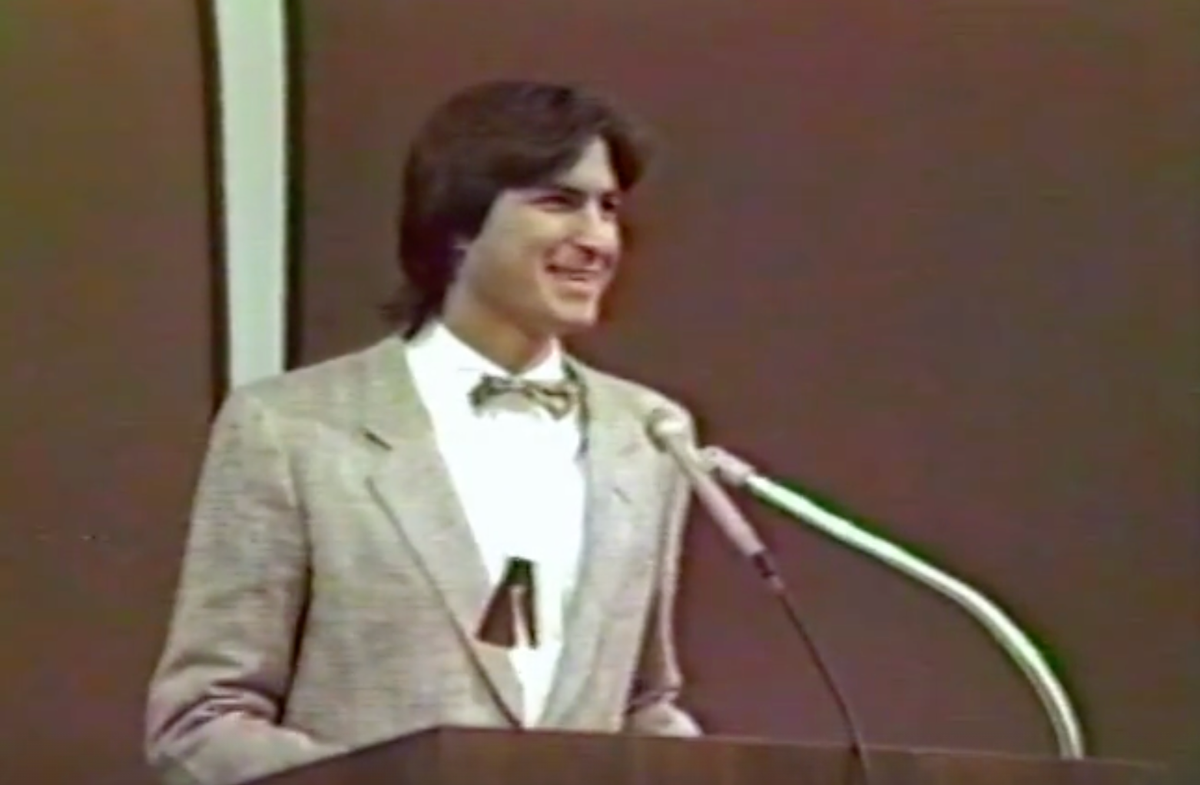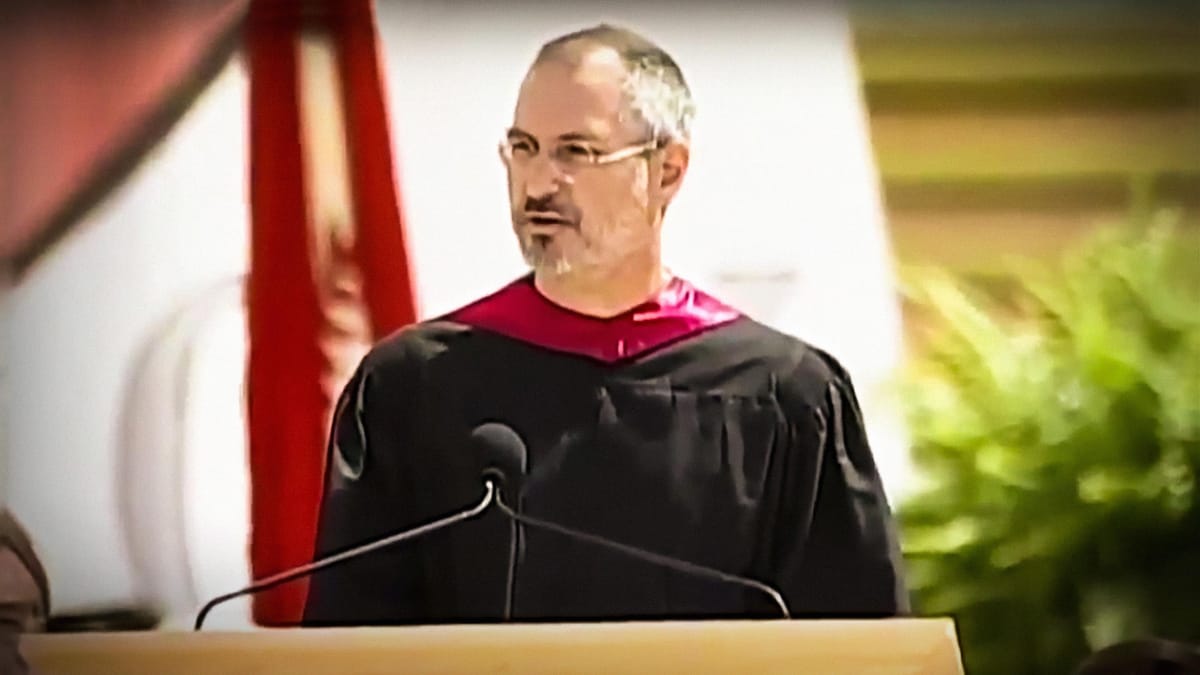When Steve Jobs Fused Silicon Valley & Hollywood at Pixar
It's November 22, 1996 and Steve Jobs has a cold. But unlike Frank Sinatra 30 years earlier, Jobs actually sits down for his interview,1 because it's the one year anniversary of the release of Toy Story, Pixar's first film released in collaboration with Disney. And now, to mark the 30th anniversary of the movie, the Steve Jobs Archive is sharing this never-before-seen footage.
Jobs is just 41 years old at the time but it has been 11 – eleven! – years since he was pushed out of Apple. That was the same year that he started NeXT, which he's still the CEO of in this video, not yet reunited with his first company (that would happen just weeks later). He's also been the CEO of Pixar for just over a decade here, having bought the business from George Lucas, out of Lucasfilm – for $10M. It took that entire decade to make their first feature film. But it worked. Boy did it:
Toy Story was the world’s first entirely computer-animated feature-length film. An instant hit with audiences and critics, it also transformed Pixar, which went public the week after its premiere. Buoyed by Toy Story’s success, Pixar’s stock price closed at nearly double its initial offering, giving it a market valuation of approximately $1.5 billion and marking the largest IPO of 1995. The following year, Toy Story was nominated for three Academy Awards en route to winning a Special Achievement Oscar in March.
The largest IPO of 1995 would be a seed round for an AI startup today – and in some cases, not even that outlandish of one.
The entire 22-minute video is obviously worth the watch. There are a lot of good nuggets about both Pixar and Disney, but the one part that really stood out to me was about how he thought about building teams – in particular at Pixar, which wasn't necessarily a world, filmmaking, that he was close to. But he did know technology and knew this would have to be a sort of hybrid of Silicon Valley and Hollywood – even though he also knew previous attempts to fuse those worlds never worked. The cultures were simply too different. Or were they...
When asked about how he's different than the studio heads of old, Jobs takes a moment to think about it – a very Jobs-ian move in such interviews – and he starts to talk through how they're building something different with Pixar. But as he talks through it, he seems to realize that actually, it's not that different from what he's done in technology when it comes to building teams:
"This is the same in technology as it is at Pixar and on the creative side. Which is: where you’ve got incredibly talented people that are also rare and in-demand, if you don’t treat them right, they can go get another job in 10 minutes. So this strange thing happens, which is sort of the hierarchy of power inverts. And the CEO is actually at the bottom [laughs]. So I sort of feel like I work for most of these people. Because they’re the ones that are doing all the brilliant work. And it’s the same in software. It’s the same thing. The best people are very hard to come by. And so it’s managements job to support them. Because they’re on the front lines doing the work. So that’s kind of how we run the place."
"I play the orchestra" anyone? But really, there are similarities to the answer he gave in a Q&A all the way back in 1983 about attracting and retaining talent at Apple. And obviously this will resonate with anyone building teams – in particular, perhaps those building teams working on AI at the moment. "They can go get another job in 10 minutes."
When pressed how he's been able to build such a culture to foster success:
“We do that by creating the right environment. A very rich environment. And removing obstacles out of their way. And putting together the right teams of people together. And getting the right projects. Keeping the quality levels very high, both in terms of people and strategy and projects. Those kinds of things.”
He keeps going:
“As an example our studio has grown tremendously this year. We started off at about 175 people and we’ll be at about 300 people by the end of this year. And one of our major challenges was not to lower the quality bar one iota. And we managed to accomplish that. We put together a very strong recruiting group. We did a lot of other things that I’d rather not talk about cause they’re competitive advantages. And we were able to hire you know, 125 A+ people this year.”
He played the orchestra, but he also assembled that orchestra.
It would be interesting to know what Jobs would have thought about our current Age of AI – in particular, AI as a tool to augment creative endeavors, such as filmmaking. Hollywood is obviously up-in-arms about it right now, but there was a time when digital animation was the new technology cast aside. The same has been true of basically all new technology.
While many would undoubtedly jump to say that Jobs might hate something as seemingly "soulless" as some of the creative output we get right now from AI, I'd like to imagine he would find a way to fuse the creative talent with the technical talent to make something magical. Something like Toy Story.2
One more thing: the other stand-out bit is when Jobs is explaining how Walt Disney realized that to make filmmaking work with this new technology at the time, animation, he would actually have to invert the way movies were typically made – something which Pixar had to do as well: "You have to edit your film before you make it."



1 Issey Miyake shirt and all. ↩
2 Incidentally, we just showed our youngest part of Toy Story this past weekend as her very first movie. Have to gear her up for Toy Story 5 with it's antagonist... the um, tablet! ↩



